I was fortunate enough to visit Belarus in October, 2024, and I had an awesome time. It was an unexpected but welcome addition to my travel plans, made possible by the country’s extension of visa-free travel for an additional 35 countries – which included the United Kingdom. Train travel has always been a highlight of my travel experiences, so I was very much looking forward to utilising this mode of transport during my time in Belarus.
As flight options are limited to Minsk Airport and its smaller regional airports from the majority of countries in Europe, you can read my travel guide on ‘Lithuania to Belarus by Coach‘ where I took a coach from Vilnius International Airport to Minsk Central Bus Station. This will answer the most common questions, so that you can easily take this journey yourself.
I travelled from Luton Airport to Vilnius, but there are low priced fares from London Stansted Airport as well. You also have the option of flying to Warsaw Chopin Airport, taking a train from Warszawa Centralna/Warszawa Wschodnia to Terespol, travel by bus over the border and take a train from Brest C to Minsk.
The first train line that was built across the country spanned from Saint Petersburg to Warsaw, and began operating in late 1862; it included the station in Hrodna. Two additional lines followed in the 1860’s and 1870’s. The next addition was the Daugavpils (Latvia) to Polatsk line, which extended onto Vitebsk. Later, the Warsaw to Brest train line was added, which extended all the way to Moscow.
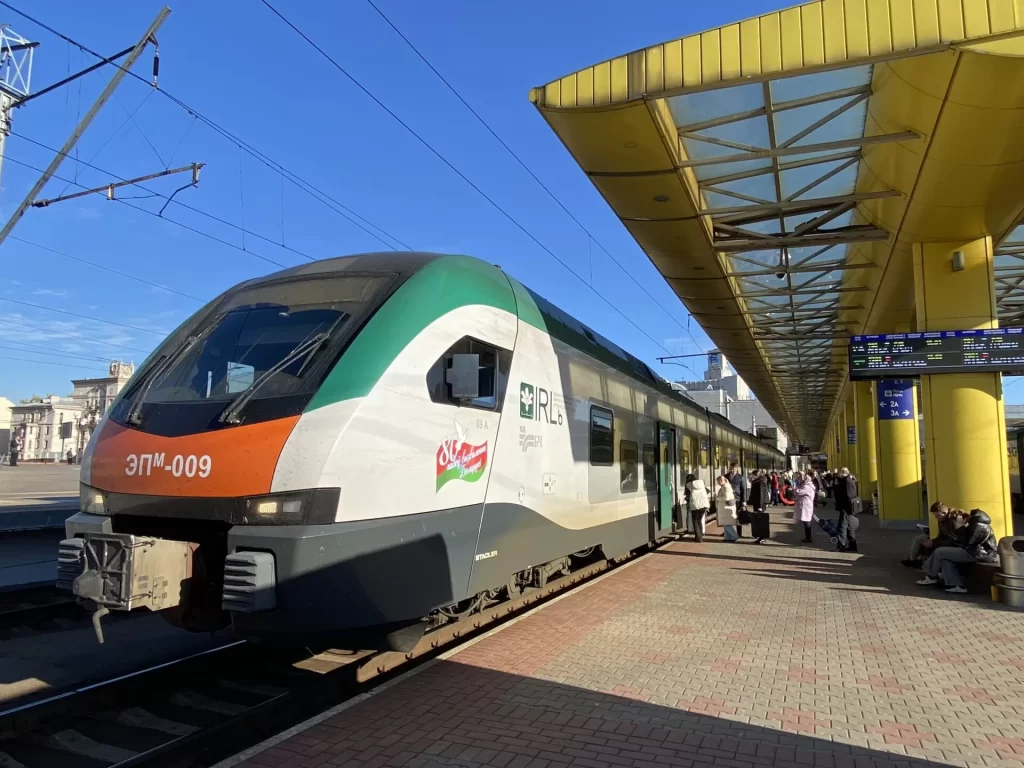
Belarusian Railways has a far-reaching train route network, spanning all areas of the country including its major cities. The lines are a mixture of electric and non-electric, and there are no current high-speed trains anywhere in the country. However, they do have a number of night train routes including the Brest to Grodno service all of which are direct routes. The only urban network in the country is the Minsk metro line that currently has three lines operating across the capital city.
Currently there are limited international train routes, but you can find Russian sleeper trains to Moscow Belorussky from Minsk Passazhirskiy in Minsk city centre. This is a great option if you are looking for onward travel to the Russian Federation including Moscow & St Petersburg. These are operated by Belarusian Railways and not Russian Railways.
Train Travel in Belarus: Important things to know
- Visas: From 08:00 on 19th July 2024, Belarus extended its visa-free entry (30-day visa) on its land borders, to include 35 more European countries, which already included Latvia, Poland and Lithuania. The visa-free entry by air is still in place, although limited flights operate, as well as the short stay transit visa. Previously you haven’t needed a visa for the Brest and Grodno visa-free regions, but now you can visit the entire country. This was currently only in operation until 31st December 2024, but has now been extended by another year until December 31st, 2025. For more details on the visa and entry process, click here.
- Travel Insurance: Most foreign governments will advise against travelling to Belarus, which means you will need to buy mandatory travel insurance. There are two travel insurance providers in Belarus via which you can make an online purchase. I wasn’t asked to show evidence of this, though I recommend always making sure you have cover. Click here for more information on the providers in Belarus.
- Language: English is spoken, but it can be limited. I’d suggest having Google Translate to hand, or perhaps do a crash course in Russian – this would be useful!
- Safety: During my time in Belarus I felt completely safe, both day and night. The locals were nothing but friendly, and were always more than happy to help if I had any questions.
- Tickets & Passes: It’s a good idea to bring paper copies of your train tickets. Every interaction I found myself in allowed for digital versions, but it’s always worth having paper copies, in case you are asked for them.
- Documents for train travel: When you board the train, if you are a tourist, you will be asked to show your passport. Ensure you have this to hand before and after the train departs.
Belarus train Network Information
Belarus has 20 major railway stations. The network itself is highly developed and includes both diesel and electric-powered trains. It’s so well-developed, in fact, that you can travel across the entire country by connecting day trains and/or night trains. This leaves you with a lot of options, depending on how you want to customise your trip! I travelled from Minsk to Brest, and then from Brest to Grodno via the night train. You can view the network here.
The layout of the trains is dependent on the route you take. The night trains, for example, have a four by two sleeper set-up. The train I travelled on had four beds in each berth and two beds at the bottom of each berth, with a corridor in between – it’s worth noting that the berths are also open.
Top Tip: When booking, keep in mind that the odd numbers are the bottom beds, and the even numbers are the top beds. The website will allow you to filter this when choosing your seat.
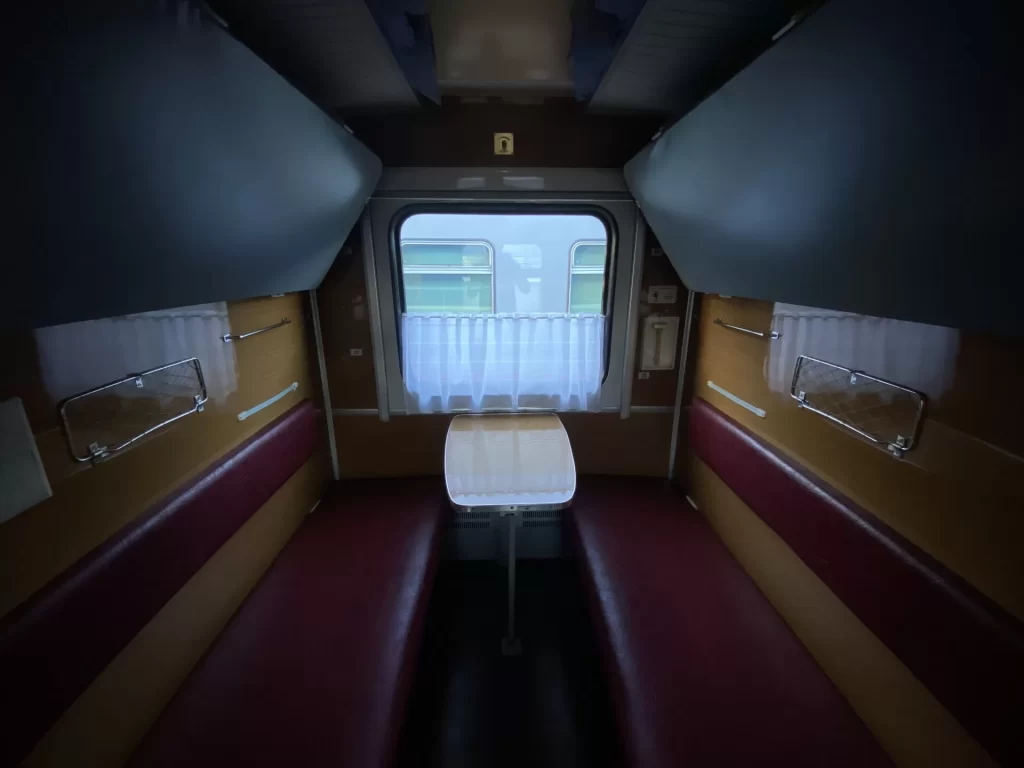
Types of Belarusian Train
There are three main types of trains you will find in Belarus:
- Urban/Suburban: These are found within the city boundaries of Minsk; they travel to some of the nearest cities.
- Regional: These are trains that run within a specific region of Belarus. They may go as far as the nearest city in the adjacent region. Travel class options vary depending on the train type. Diesel trains only have economy class, while the electric-powered trains have both economy and business.
- Interregional: These are trains that travel to each of the capital cities of the six regions. They depart from Minsk and are electric-powered, therefore offering both economy and business seat options.
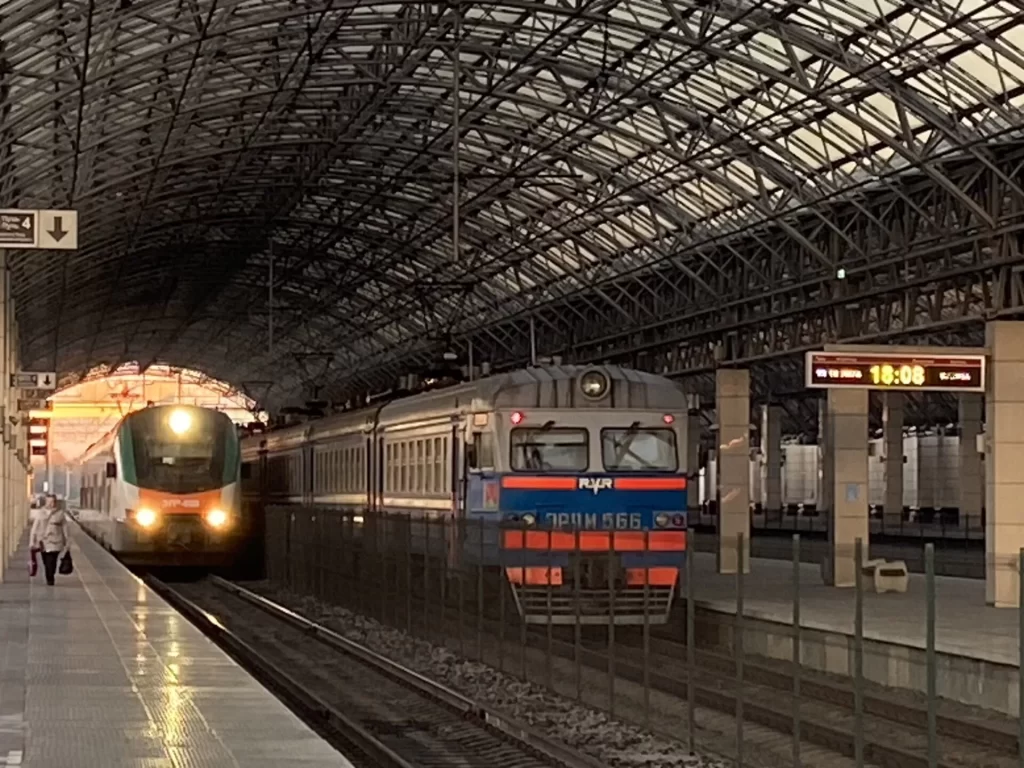
Cost: The cost of tickets varies depending on which train type, class, or route you choose. When I was searching for routes during the planning stage of my trip, the prices ranged from €6 – €14, so in terms of value for money it offers a comfortable and well-priced service.
-
Visit the official Belarus Railways website. (I recommend creating a profile first as this is required to complete the purchase).
-
On the homepage there is a search function which allows you to buy tickets for specific routes; it also allows you to view the schedules from specific stations.
-
You will need to translate the page during each of the steps to English in order to easily purchase tickets, and you can select Euros or Dollars as the currency.
-
Once you have chosen your desired route, select the departure time; you will then need to select your class, and seat.
-
Once you have chosen these, click ‘Enter Passenger Details’. You’ll then be prompted to login to the profile you first set up.
-
Once you’ve entered your passenger details, you will be taken to the payment section. You can pay for your tickets using a valid credit card including visa or mastercard.
-
Once complete you will receive tickets by email. Don’t forget to print off paper copies of the tickets, in case you need to show them at the station.
Important Note: The website can be very temperamental; it took me multiple attempts to purchase the tickets.
At the station in Belarus
Boarding a train in Belarus is quite similar to boarding a train in most other parts of Europe. The stations have departure boards, food outlets, shops, ATM’s, seating areas and ticket/information booths to help you with anything you need.
The departure boards are usually in Belarusian. However, you can identify your train by using the train number and departure time to pinpoint the platform you are departing from.
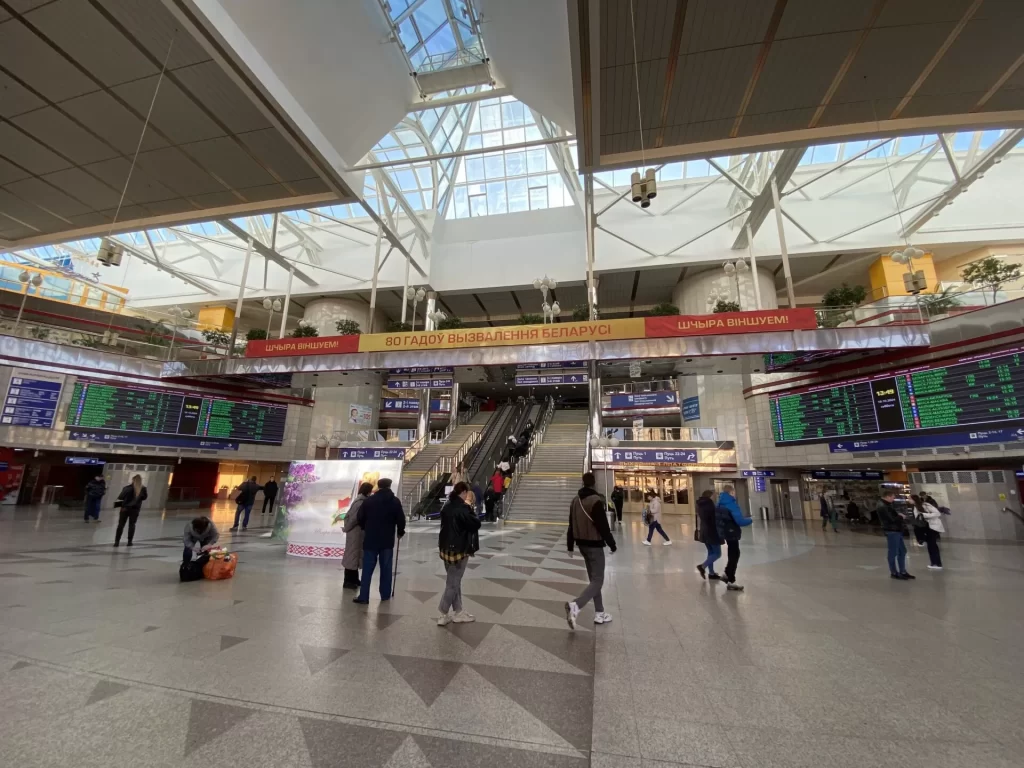
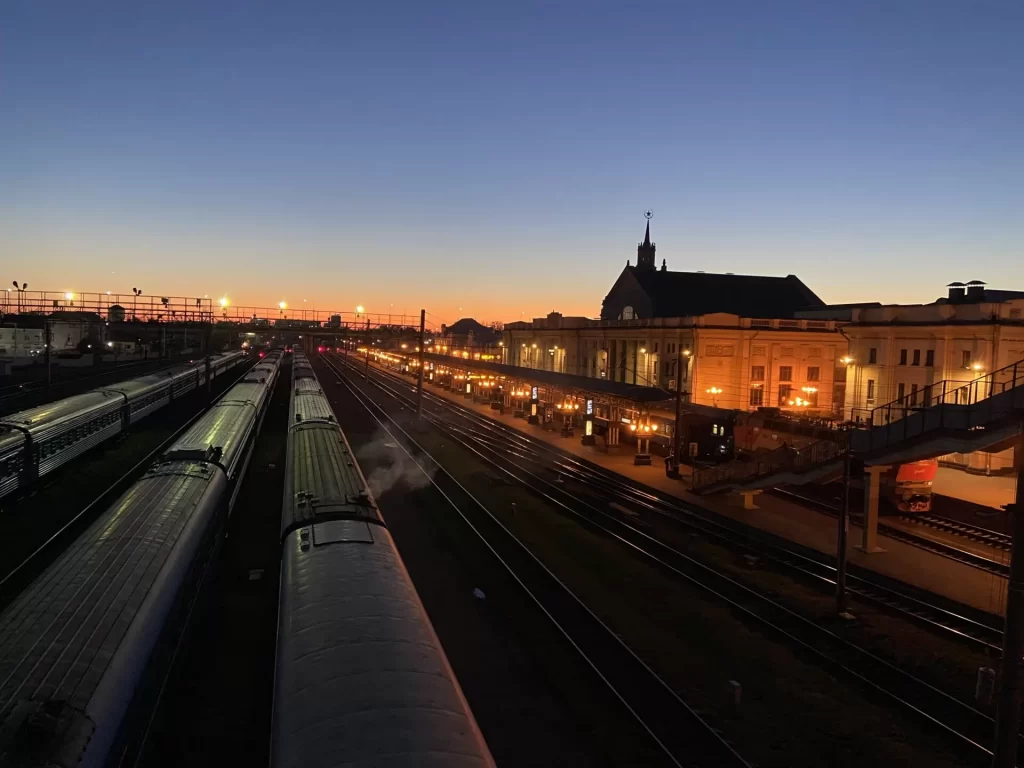
If you are taking any night train that arrives into Hrodna (Grodno) railway station in the early hours of the morning, there’s a coffee machine on the first floor of the departure/arrivals hall. Downstairs, there is also a 24-hour cafe called ‘Big Jones’ that has coffee, food, and free WiFi. You’ll find various taxi app services in Belarus, and other taxis waiting outside the station buildings. The taxi app I used was Yandex Taxi, and I often recommend these for any journeys whilst travelling, especially the longer airport fares as you will know in advance the price you are paying.
On the train
Minsk – Brest
I travelled between two off Belarus’ main cities, by taking the 15:01 from Minsk, and arrived into Brest at 18:01, with a trip time of 3 hours. This appeared to be one of the most modern trains of its network. The price difference between 2nd class seats and business class was no more than a couple of Euros, so as I felt like splashing out, I opted for business class. The ticket cost around €10. This service only offered two classes, and there were no 3rd class seats.
I was surprised by how modern the comfortable air-conditioned trains themselves were. Upon entry you had a luggage storage area, cloak room and blankets that were free to use. The seats were either in a four-seat formation with a static table, or a two-seat formation with a folding table. Every seat was numbered, so finding my way to my seat was a walk in the park.
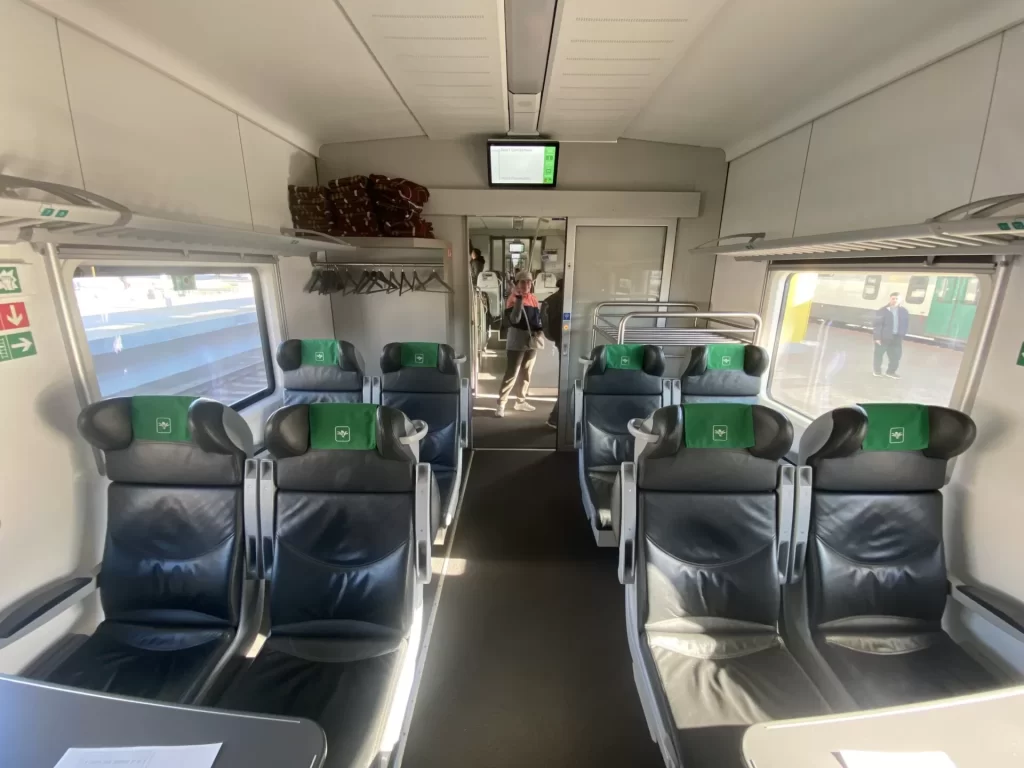
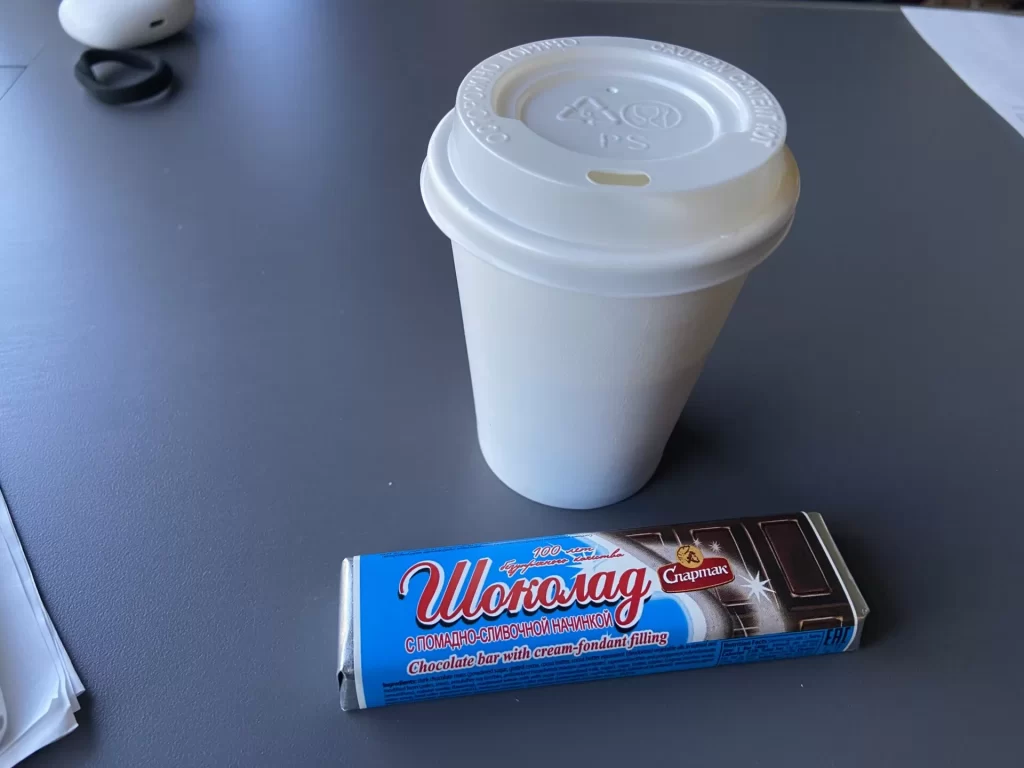
The seats included power sockets, WiFi and a reclining feature which made the journey more comfortable. There was a food and drink menu ready for me on my table when I sat down, and everything was very reasonably priced. I ordered coffee and a chocolate bar, which cost 5 BYN (€1.50).
The train conductor will check your ticket as well as your identification document before departure and then take any refreshment orders, which will then be brought to you. Overall, the journey was on time, smooth and wonderfully efficient as we sped through Belarus, with Brest on the horizon.
Brest – Hrodna (Grodno)
In the name of both efficiency and adventure – which are not two things that often come hand-in-hand – I decided to take the direct route 12-hour night train from Brest to Hrodna. My alternative was a four to five-hour bus journey. I booked a sleeper carriage which cost around €7.50 to Hrodna, where I was due to take a coach back to Lithuania. If you’re interested, you can find answers to all of your popular questions by reading my blog post on ‘Lithuania to Belarus by Coach‘ where I took a coach from Vilnius International Airport to Minsk Central Bus Station.
The layout of the night train was consistent with most others I’ve been on. It was a four-berth open sleeper with two top and two bottom beds. I normally book a top bunk when I travel by night train, as I prefer to be up out of the way, with my bags. I find it helps me get a good night’s sleep without getting disturbed, or trodden on!
During the day, the top bunks are usually folded away and you can sit with other passengers until you want to relax for the night. Each section had its own ladders that pushed down and swiveled outwards, providing access for passengers to climb up to the top bed after it had been pulled down. Each bed had its own storage shelf, and a towel rail. For an additional cost of three BYN (€0.85) I purchased a bed sheet, pillow case and towel, to go with the pillow, mattress and allocated to my bed. These were not the cheapest seats available, but I would recommend travelling in a sleeper compartment instead of a fixed seat.
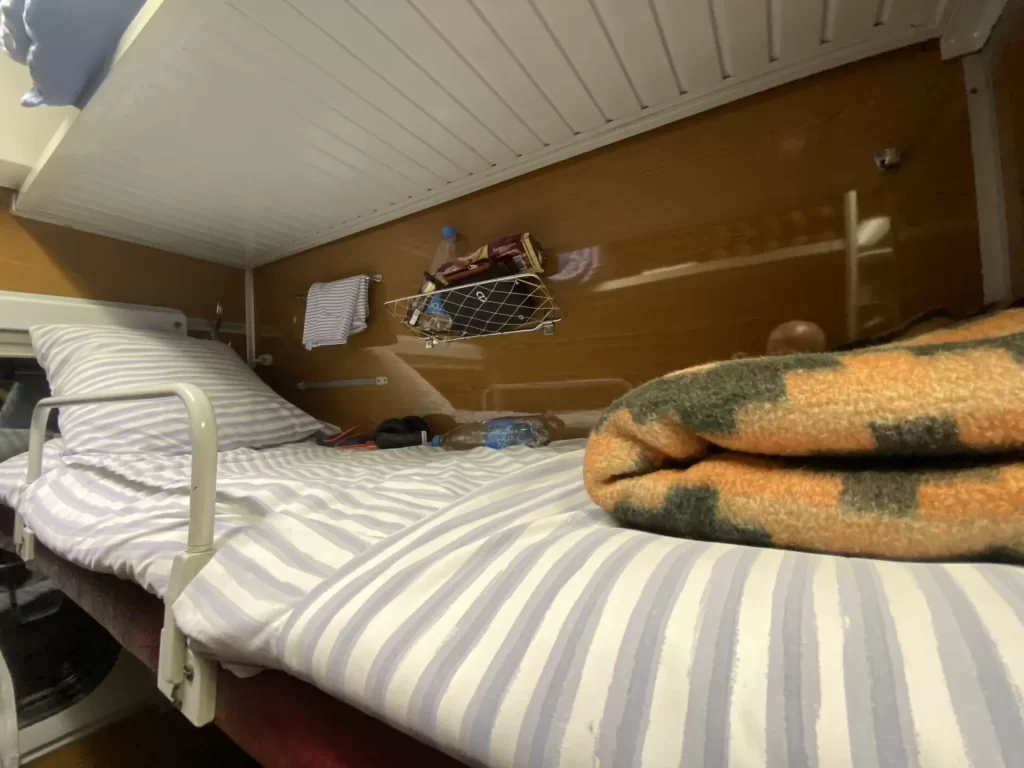
Service & bathrooms on the train
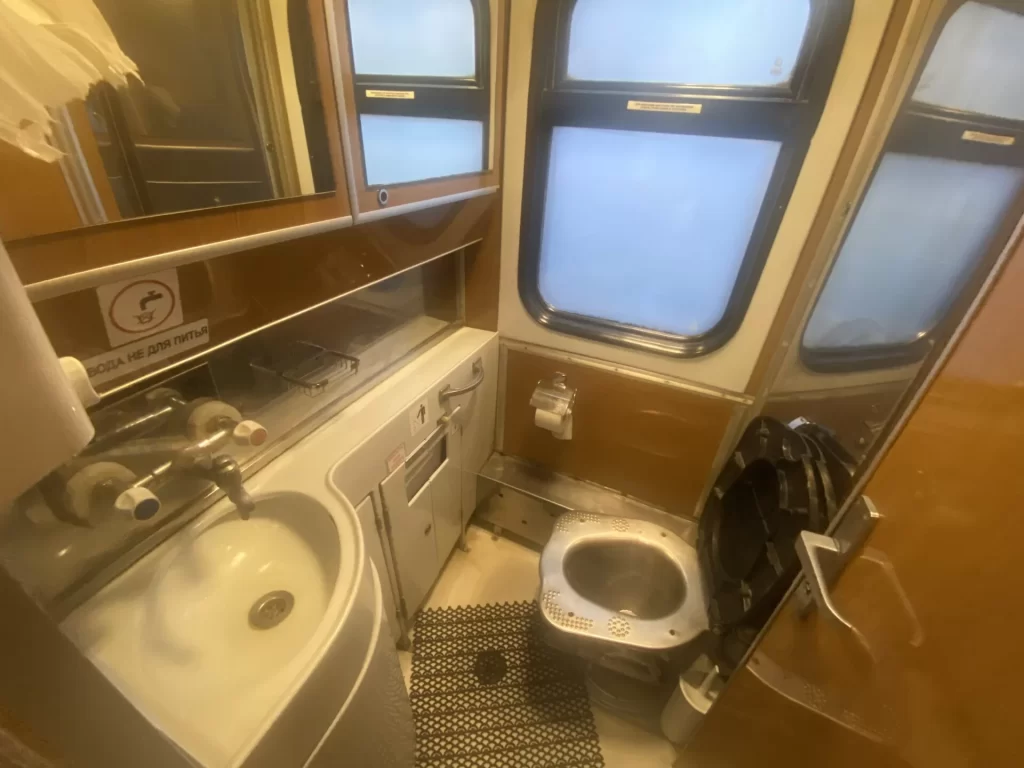
Each carriage has its own assigned member of staff to help you with anything you might need during the journey; there were bathrooms at each end of the carriage which were clean and had running water to freshen up. Passengers had the option to purchase refreshments during the journey but there was also a hot water station, which I used to cook the noodles I had bought on my way to the train. These, coupled with the kebab and snacks I bought in Brest Railway Station, saw me through until the morning.
Journey time
We departed on time at 17:22 and arrived in Hrodna on time the next morning. At around 21:15 the train does stop for 1.5 hours whilst the carriages are split as the train goes to two different destinations. You can stay on the train or if you want to stretch your legs, you’re free to get off onto the platform.
Generally, the train itself was spotlessly clean and comfortable. However, I did not see any power sockets to charge anything, so it’s worth bringing a battery pack with you. Second however: if you are tall (like I am), on the top bed (like I was) and you have a luggage storage area above the bed (like I did), space may be a little restricted. If you want the ability to sit up straight, I’d suggest taking a bottom bunk.
The Best Way to See Belarus
In my opinion, travelling by train is categorically the best way to get around Belarus. The railway network is so extensive that it allows you to enjoy and explore a lot of the country – while enjoying trains at the same time. Compared to other European countries, ticket prices were affordable, trains were clean, staff were helpful, and every service departed on time.
